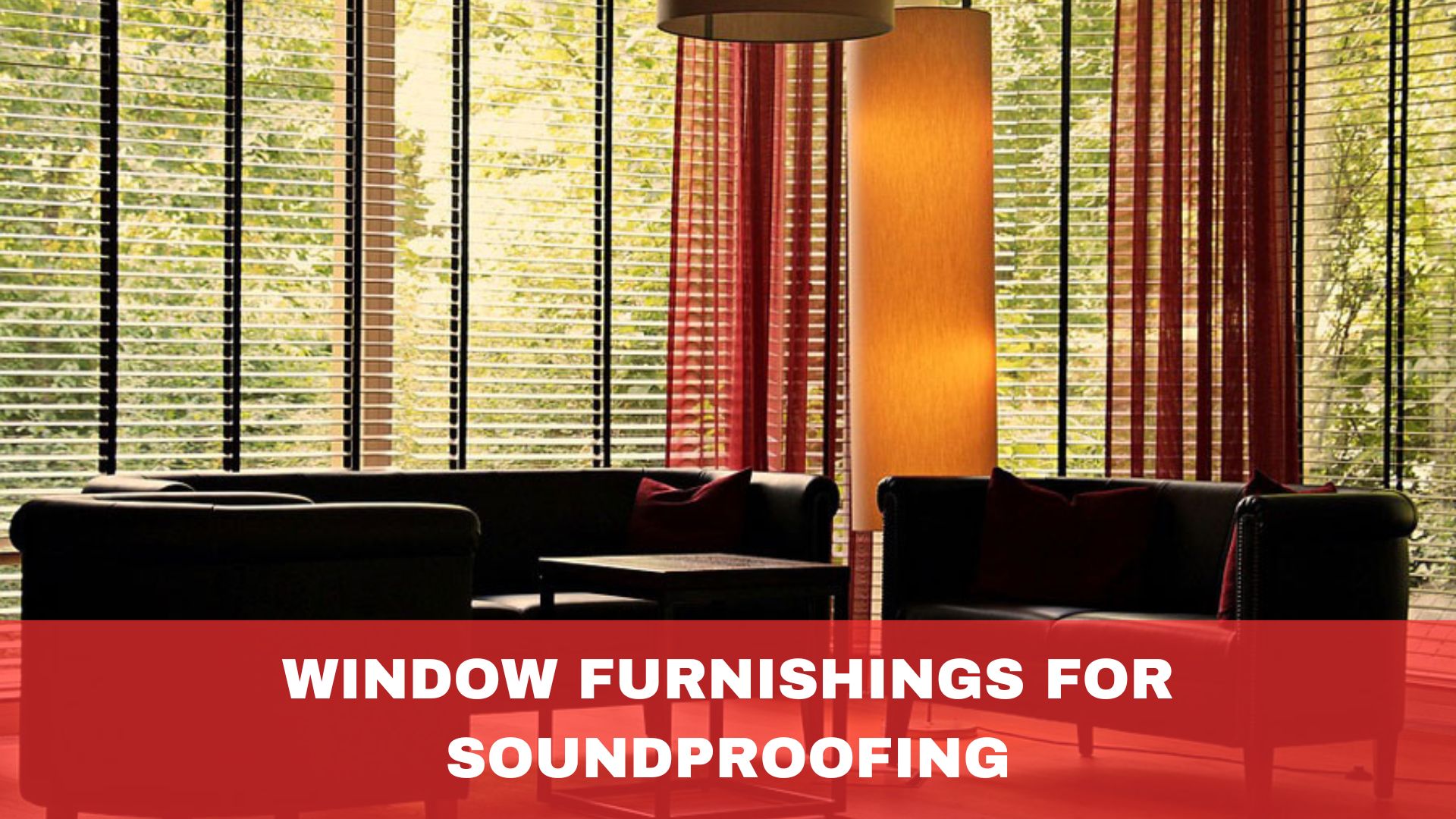Living in a noisy environment can disrupt your peace and hinder relaxation at home.
Constant traffic noise, loud neighbours, and urban clatter can make it challenging to find tranquillity, affecting your overall well-being and quality of life.
Discover how window furnishings designed for soundproofing can transform your home into a serene sanctuary, blocking out unwanted noise and providing the quiet, peaceful atmosphere you deserve.
How Window Furnishings Help with Soundproofing
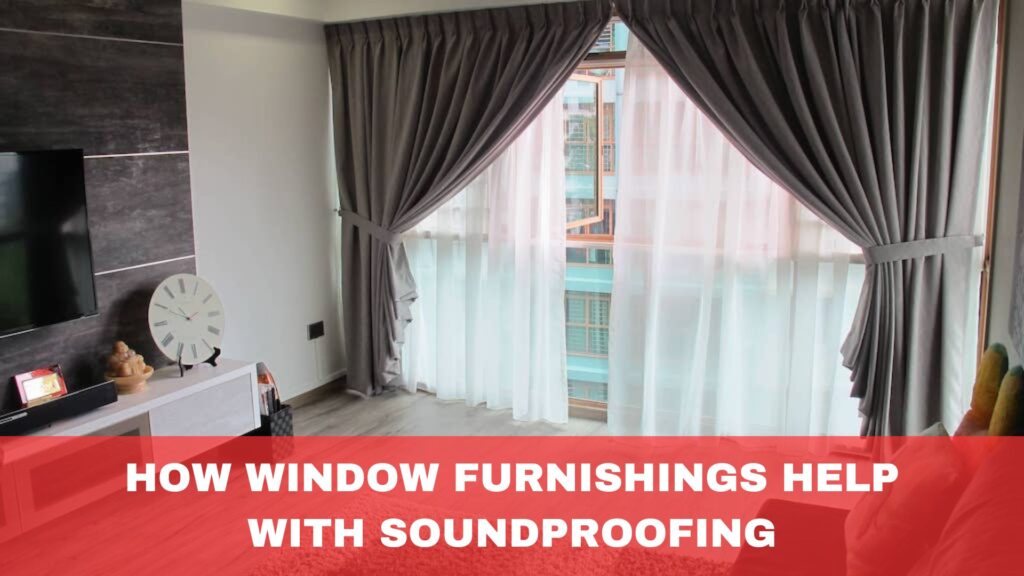
Window furnishings are more than just decorative elements; they are crucial in soundproofing your home. Acting as an additional barrier, they help reduce the noise entering through windows, often the weakest points in a building’s acoustic insulation.
Heavy curtains and drapes can significantly dampen external noise, especially those made from thick, dense materials like velvet or lined with sound-absorbing fabrics. These materials absorb sound waves, preventing them from bouncing around the room.
Cellular shades, also known as honeycomb shades, are another excellent option. Their unique structure creates air pockets that trap and absorb sound, effectively reducing noise levels. They are functional and add a sleek, modern look to your windows.
Window films and acoustic panels can also enhance soundproofing. These solutions block and absorb sound waves, providing an extra noise reduction layer.
Types of Soundproofing Window Furnishings
Creating a quiet and peaceful home environment begins with effective soundproofing, and your windows are a critical focus point. Windows are often the primary entry point for external noise, so choosing the right window furnishings to mitigate this intrusion is essential.
Soundproofing window furnishings enhance your home’s acoustic comfort and contribute to improved sleep, reduced stress, and overall well-being.
Several types of window furnishings are specifically designed to reduce noise pollution. These furnishings utilise various materials and structural designs to block, absorb, or deflect sound waves, providing sanctuary from the outside world. Here are the top options to consider:
1. Heavy Curtains and Drapes
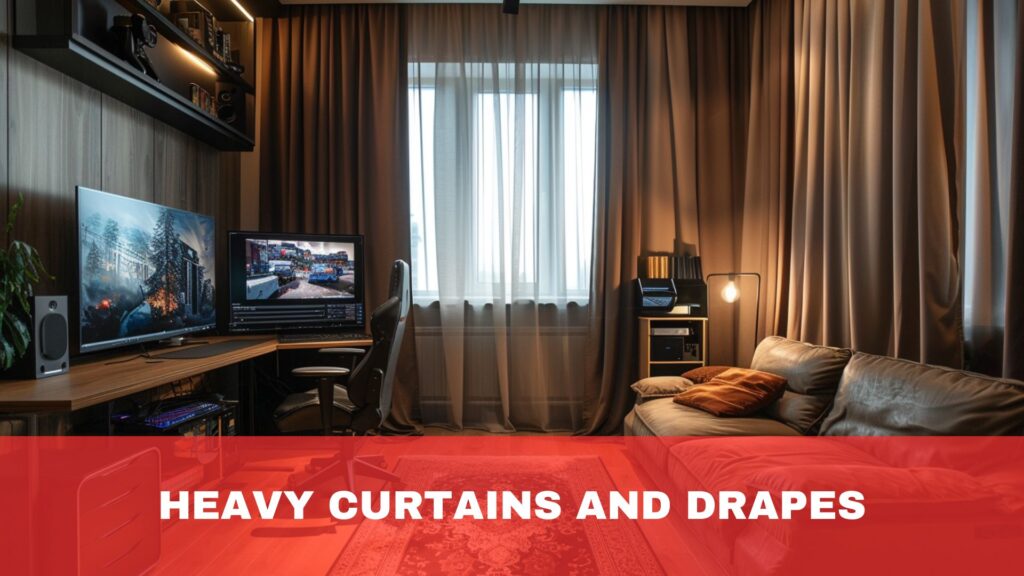
Heavy curtains and drapes are the most effective solutions for soundproofing your home. These window furnishings are designed from dense materials such as velvet, brocade, or thickly lined fabrics, which excel at blocking and absorbing sound waves.
Their weight and thickness help to create a barrier that significantly reduces the amount of external noise entering your living space.
When selecting heavy curtains or drapes for soundproofing, consider the fabric’s density and the presence of additional sound-absorbing linings. Curtains with multiple layers or specialised acoustic linings offer enhanced noise reduction capabilities. These layers trap sound waves, preventing them from penetrating your home and maintaining a quieter indoor environment.
Installation also plays a crucial role in maximising the soundproofing benefits of heavy curtains and drapes. Ensure the curtains are long enough to cover the entire window, extending a few inches beyond the frame on all sides. This ensures a tight seal that minimises gaps where sound can leak through.
2. Cellular Shades
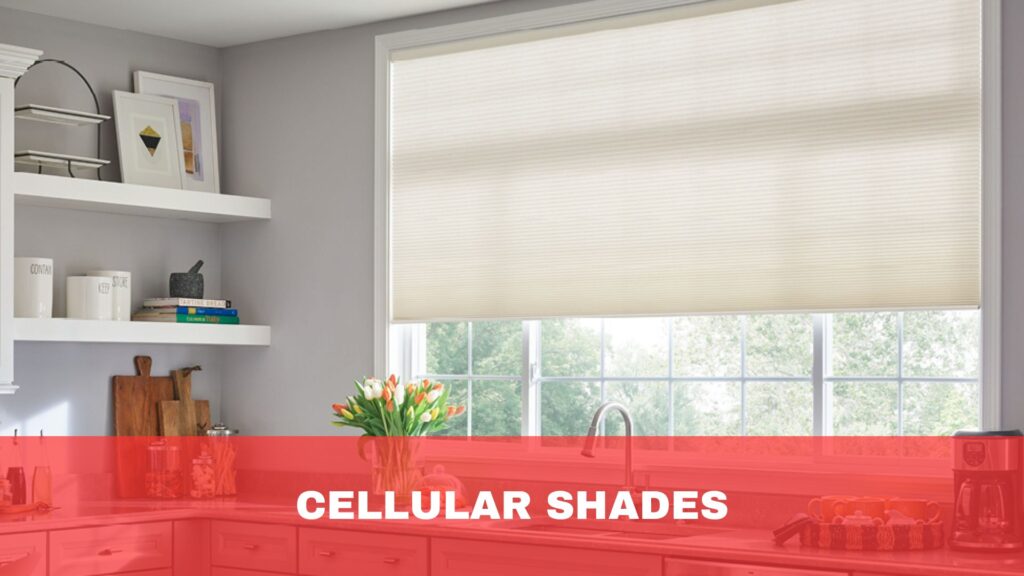
Cellular shades, also known as honeycomb shades, are innovative and highly effective for soundproofing your home. Their unique design features a series of honeycomb-shaped cells that trap air, creating an insulating barrier against noise and temperature fluctuations. This structure enhances their thermal efficiency and significantly reduces the penetration of external sounds.
Cellular shades’ effectiveness in soundproofing is due to their multi-layered construction. Single, double, or even triple-cell designs are available, with the double and triple-cell options providing the highest level of sound absorption. These cells work by trapping sound waves and preventing them from travelling through the window, thus maintaining a quieter indoor environment.
Cellular shades are known for their soundproofing benefits and energy efficiency. They help keep your home cool in the summer and warm in the winter, potentially reducing energy costs.
Another advantage of cellular shades is their aesthetic versatility. They come in various colours and styles, allowing you to customise your window treatments to match your interior decor while enjoying the benefits of a quieter home.
3. Acoustic Blinds
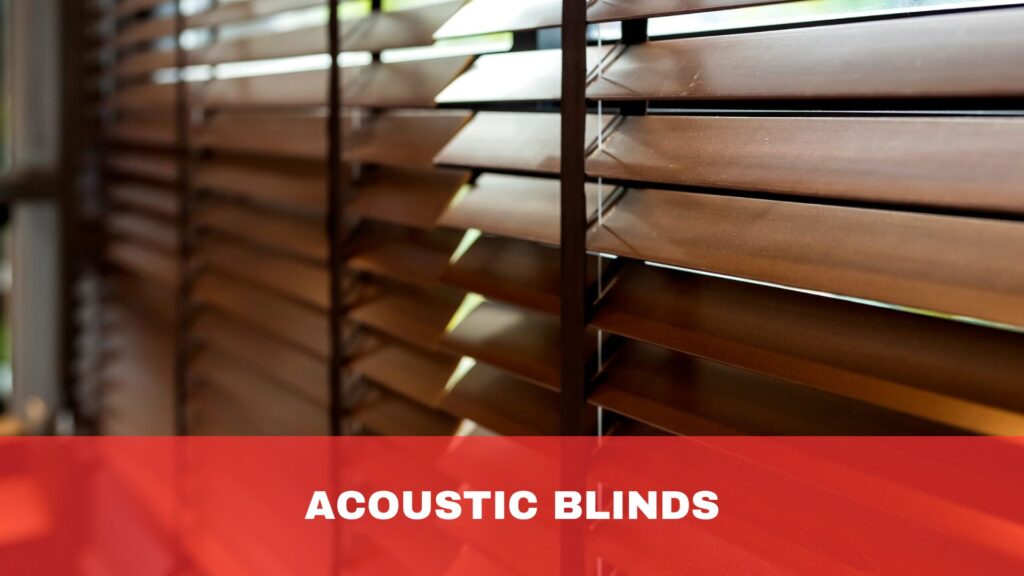
Acoustic blinds represent a cutting-edge solution for those seeking optimal soundproofing in their homes. Unlike traditional blinds, which primarily control light, acoustic blinds are specifically engineered to effectively absorb and block external noise.
These blinds feature specialised fabrics that are dense and layered with sound-absorbing materials. This construction helps to dampen sound waves, preventing them from entering your living space and disrupting your peace. The effectiveness of acoustic blinds in noise reduction varies based on their design and materials, with some models offering significant sound attenuation.
Installation is critical to maximising these blinds’ acoustic benefits. Ensure they fit snugly within the window frame, and consider additional measures such as side channels or seals to minimise sound leakage.
Acoustic blinds are functional and offer aesthetic appeal with various styles and colours to complement any decor. They provide a versatile solution for enhancing acoustic comfort and interior design, making them valuable to any home environment focused on tranquillity and serenity.
4. Double-glazed Windows with Integrated Blinds

Double-glazed windows with integrated blinds offer a comprehensive soundproofing solution while enhancing convenience and aesthetics in your home. These windows consist of two panes of glass separated by a vacuum or gas-filled space, providing excellent insulation against sound and temperature fluctuations.
Integrated blinds are incorporated within the double-glazed unit and typically use a magnetic or motorised system. This design prevents the need for traditional external blinds or curtains, offering a sleek and modern look while maintaining functionality.
The double-glazed structure of these windows significantly reduces noise transmission compared to single-pane windows. Combined with the integrated blinds’ sound-absorbing properties, they create an effective barrier against external noise sources such as traffic or neighbourhood disturbances.
In addition to their soundproofing benefits, double-glazed windows with integrated blinds enhance energy efficiency by reducing heat loss in winter and heat gain in summer. They require minimal maintenance and, due to the absence of external window treatments, provide enhanced privacy.
5. Shutters and Window Panels
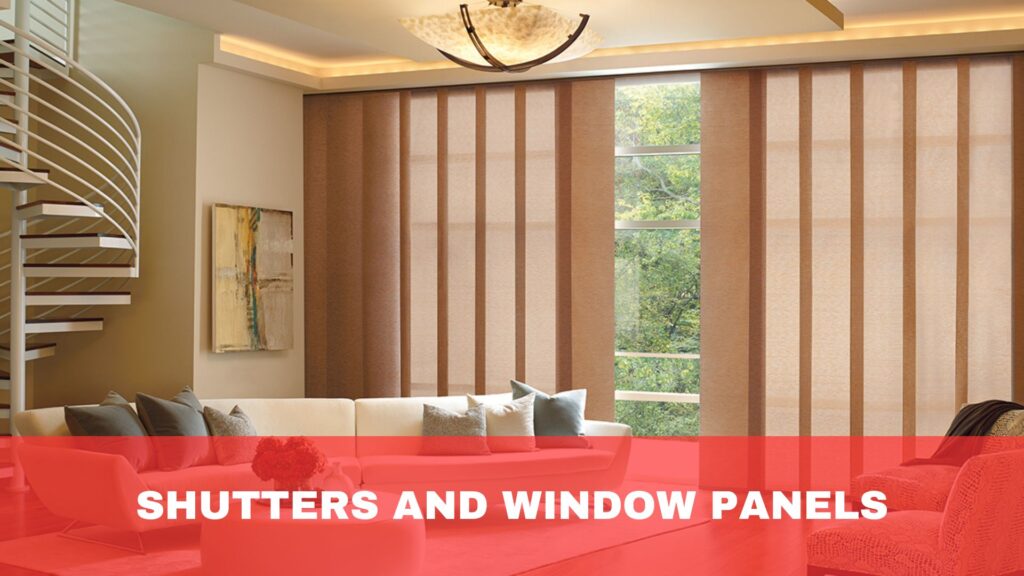
Shutters and window panels not only add a touch of classic elegance to your home but also serve as effective soundproofing solutions.
Plantation shutters, for example, are robust and made from solid materials like wood or composite. When closed, they substantially reduce noise. Their adjustable louvres allow you to control light and airflow while dampening external sounds.
On the other hand, modern window panels offer versatility in design and materials. Acrylic or polycarbonate panels can be installed indoors to create an additional insulation layer against noise. These transparent panels can be customised to fit various window sizes, blending seamlessly with your interior decor.
Both shutters and window panels enhance privacy and security while reducing noise intrusion from external sources such as traffic or neighbourhood activities. Their durable construction and aesthetic appeal make them a practical choice for homeowners seeking to create a quiet and peaceful living environment without compromising style.
Installation Best Practices
Installing soundproofing window furnishings is crucial to maximising their effectiveness in creating a quiet and peaceful home environment.
Here are critical best practices to follow:
- Snug Fit: Ensure that curtains, blinds, or shades fit snugly within the window frame to minimise gaps where sound can penetrate. Use appropriate mounting brackets or tracks to secure them firmly in place.
- Seal Gaps: Seal gaps around the window frame with weather-stripping or silicone sealant. Even small openings can significantly reduce the soundproofing capabilities of your window furnishings.
- Double-Layer Approach: To enhance sound absorption, consider using a double-layer approach, such as combining heavy curtains with blinds or shades. This strategy adds an extra barrier against noise infiltration.
- Professional Installation: Consider hiring an experienced installer for complex installations like acoustic panels or integrated blinds. They can ensure proper alignment and sealing, maximising the soundproofing benefits.
- Maintenance: Regularly inspect and maintain your window furnishings to ensure they remain in optimal condition. Clean them according to manufacturer guidelines to preserve their soundproofing properties.
Additional Tips for a Quieter Home

Creating a quiet and peaceful home extends beyond choosing the right window furnishings.
Here are some additional tips to enhance soundproofing:
- Seal Doors and Windows: Inspect and seal gaps around doors and windows using weather-stripping or silicone sealant. These gaps are common entry points for noise transmission. Proper sealing prevents external noise from entering and internal noise from escaping.
- Use Rugs and Carpets: Place thick carpets on floors, particularly in high-traffic areas and rooms above noisy spaces. Carpets help absorb sound vibrations, reducing noise transmission between floors and rooms.
- Strategic Furniture Placement: Arrange furniture strategically to create barriers that absorb and deflect sound waves. Upholstered furniture, heavy curtains, and bookshelves filled with books act as effective sound absorbers, minimising noise within rooms.
- Soundproofing Materials: Consider installing acoustic panels or soundproof curtains on walls or ceilings, especially in media rooms, home offices, or bedrooms. These materials absorb sound and reduce echo, creating a quieter indoor environment.
- Outdoor Noise Reduction: Plant dense shrubs or trees outside windows, particularly near noisy areas like streets or neighbours, to act as natural sound barriers. Greenery helps absorb and block outdoor noise before it reaches your home, enhancing overall tranquillity.
Conclusion
Transform your home into a sanctuary of peace with practical soundproofing window furnishings. Choose from a range of options tailored to your style and needs. Take control of your environment today for a quieter, more serene living space.

